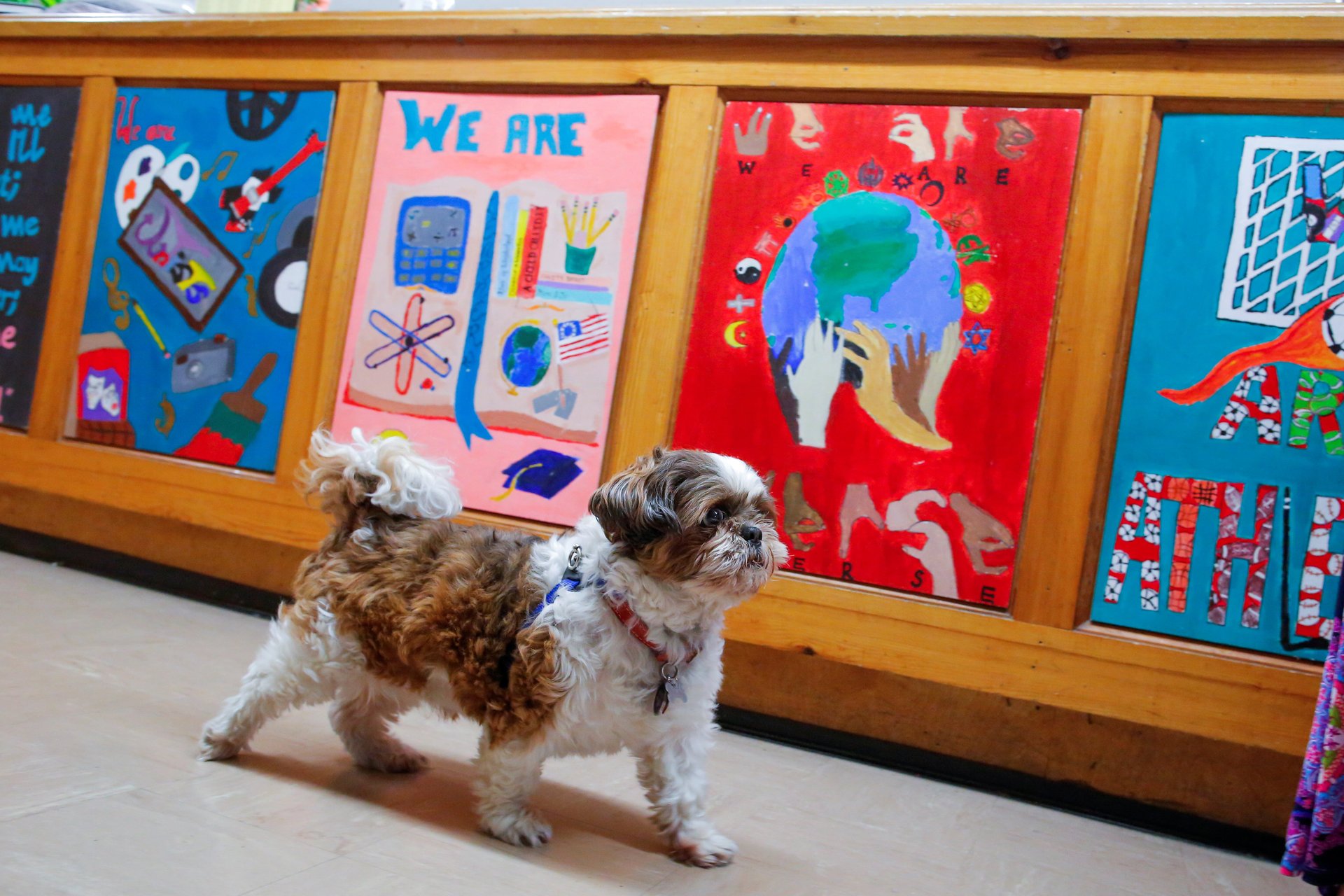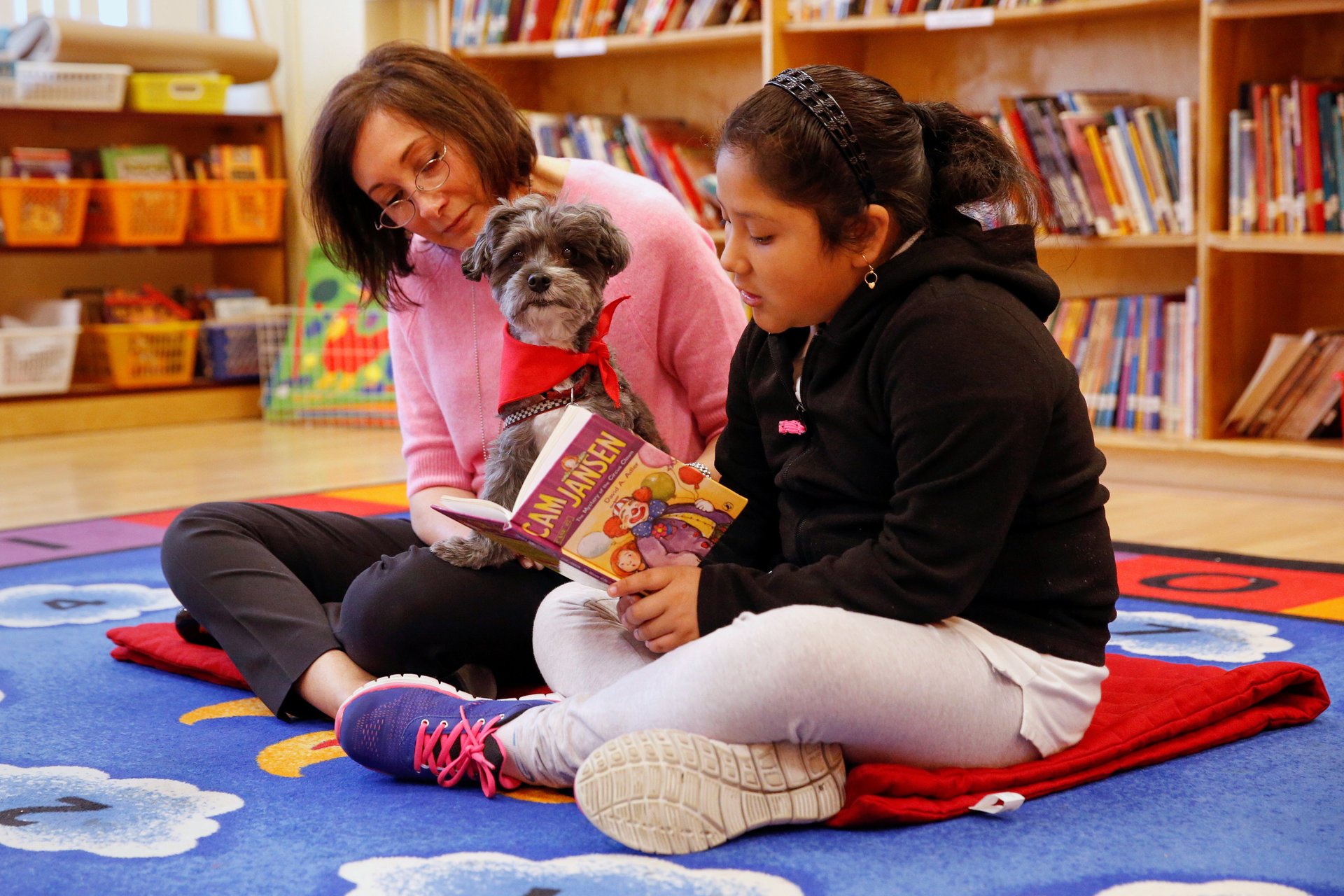The dogs in New York City’s schools comfort students and offer a lesson in leadership
Leadership can be built at any age, and it’s best when the process begins early. Under New York City Schools chancellor Carmen Fariña, it even begins in fifth grade.


Leadership can be built at any age, and it’s best when the process begins early. Under New York City Schools chancellor Carmen Fariña, it even begins in fifth grade.
Fariña, who came out of retirement in 2014 to take one of the country’s toughest public-education jobs, is a proponent of allowing children to exercise their leadership talents by making real changes in their schools. Among other things, she has insisted that student councils be empowered to influence policy, even at the elementary-school level.
Last year, she met with a newly empowered fifth-grade student council in the borough of Queens, where one of its members told her that what his school needed was dogs—and lots of them. “I said, ‘Oh really,’ ” Fariña recounted at a New York Law School event on Aug. 25. The fifth grader went into a long discussion about how he had a dog that always welcomed him when he came home, and how dogs could help children who have bad days at school.
He was so convincing that Fariña went back to her office and told her team, “We need to put dogs in schools.” Her staffers rolled their eyes, but researched the idea.
Thus was born New York’s comfort dog program. It allows schools to adopt shelter dogs, which are used to calm students or to provide lessons in empathy and resilience under a program called Mutt-i-grees, created by a Yale University researcher. At one Manhattan school, a dog helps autistic children in a special-education program. “The kids now know if they are going to have a meltdown,” they go see the dog, the chancellor says.

Staff members adopt the dogs and bring them to school each day. “When I see him, it makes me feel calm,” Alyona Podchosova, a student at a Brooklyn school, told the New York Times in May. “Sometimes my temper just gets in the way, and Petey helps me with that.” New York will have dogs in 60 schools by September, Fariña says.
Of course, the dogs do need to be controlled. One of them, a Border collie mix, used to round up sheep, is kept out of the halls between classes.
She keeps trying to herd the children.

While it may seem to some parents that New York City’s schools truly have gone to the dogs, Fariña is convinced the program works—not least of all as a reminder of what true empowerment can achieve. “The leaders of tomorrow have to be given a voice today,” she says.